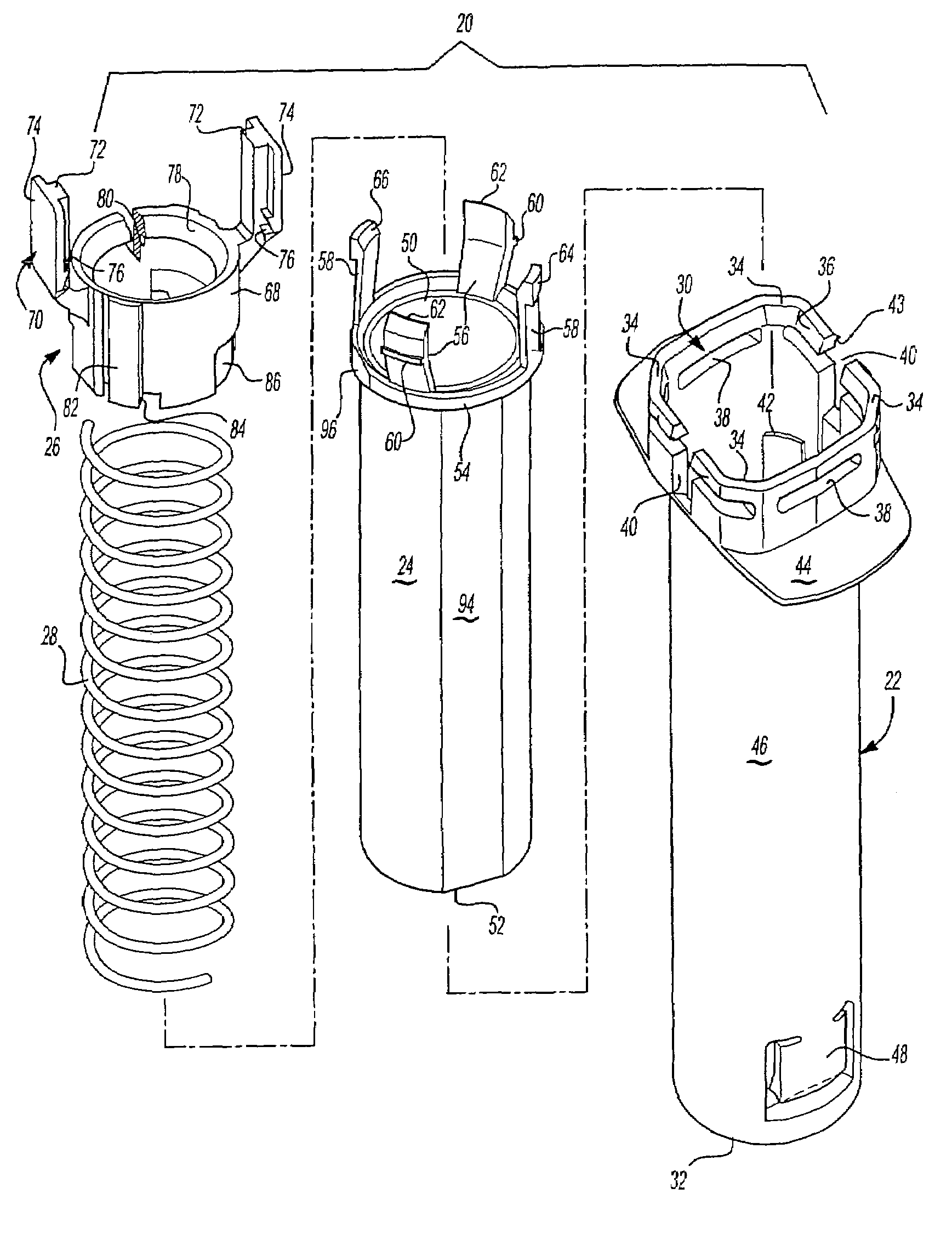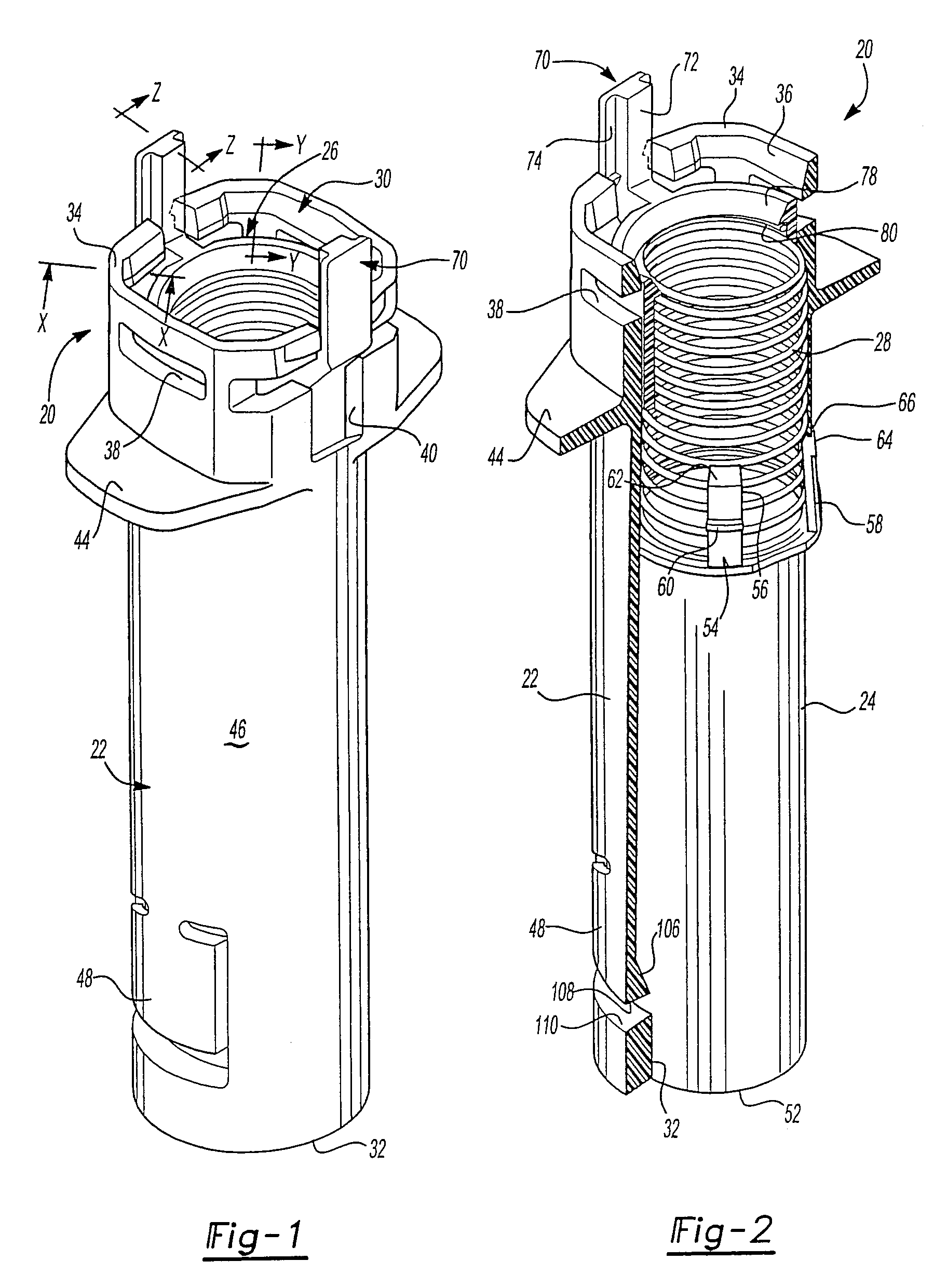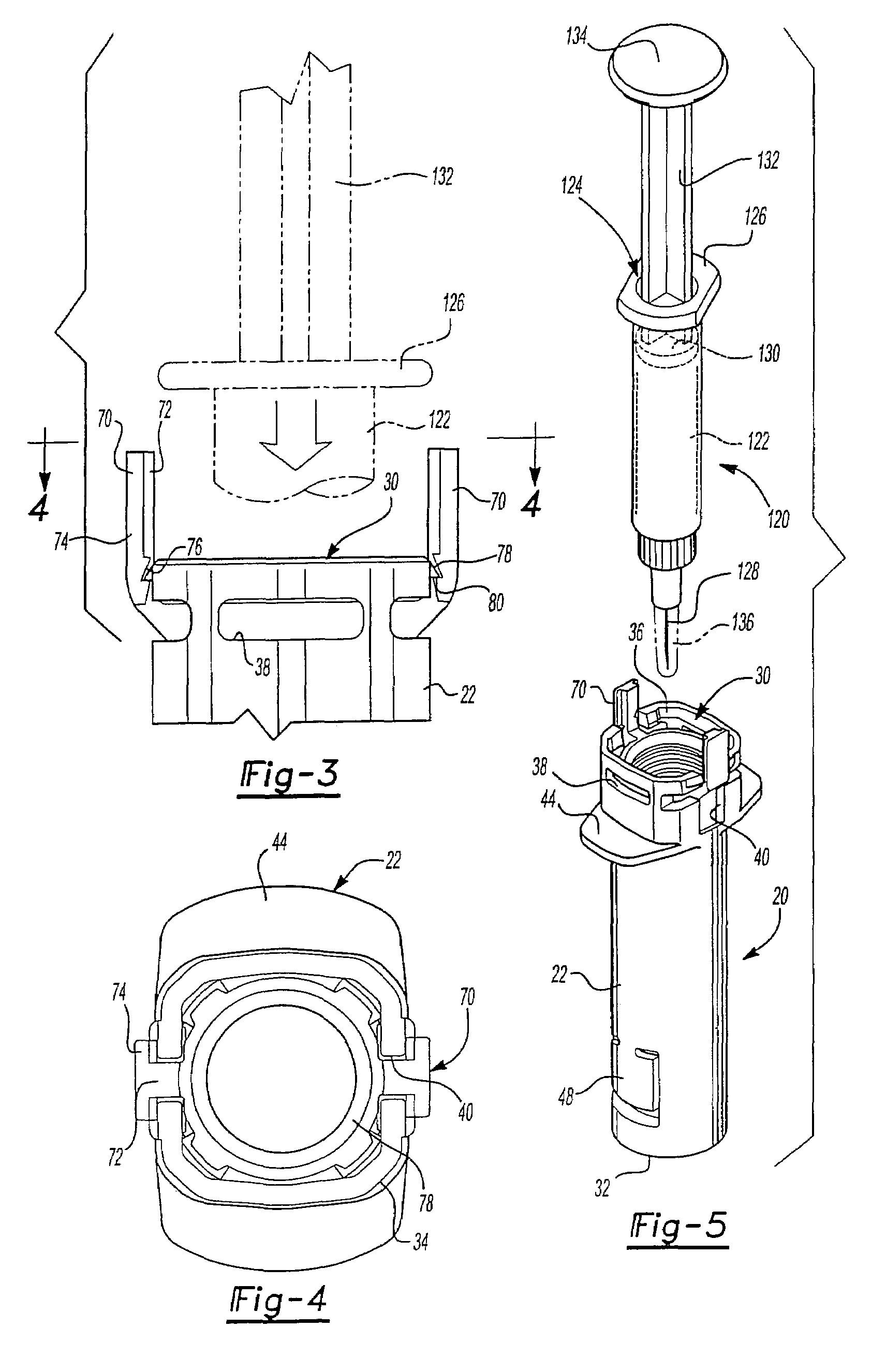Passive safety shield system for injection devices
a shield system and injection device technology, applied in the direction of intravenous devices, infusion needles, other medical devices, etc., can solve the problems of no positive assurance that the end user will properly shield, and no positive assurance that the user will use properly
- Summary
- Abstract
- Description
- Claims
- Application Information
AI Technical Summary
Benefits of technology
Problems solved by technology
Method used
Image
Examples
Embodiment Construction
[0045]As set forth above, the preferred embodiments of the shield system 20 shown in FIGS. 1 and 2 includes four components comprising a generally tubular body 22, a generally tubular needle cover or shield 24, an annular or ring shaped member 26 and a spring 28 best shown in the exploded view of FIG. 12. The body 22 includes an open proximal end 30 and an open distal end 32. The open proximal end 30 in the disclosed embodiment is generally rectangular or square having truncated corners 34, inclined internal surfaces 36 at the open proximal end of the body, radial grooves 38 which receive the flange of the syringe described below, axial grooves 40 which extend through the proximal end on opposed sides which receive the legs of the ring shaped member 26 described below, and four radial surfaces or ledges 42 at the truncated corners 34 shown in FIG. 12 which receive the radial portions of the fingers of the needle guard or shield 24 as also described below. The open proximal end 30 of...
PUM
| Property | Measurement | Unit |
|---|---|---|
| mechanical interlock | aaaaa | aaaaa |
| movement | aaaaa | aaaaa |
| force | aaaaa | aaaaa |
Abstract
Description
Claims
Application Information
 Login to View More
Login to View More - R&D
- Intellectual Property
- Life Sciences
- Materials
- Tech Scout
- Unparalleled Data Quality
- Higher Quality Content
- 60% Fewer Hallucinations
Browse by: Latest US Patents, China's latest patents, Technical Efficacy Thesaurus, Application Domain, Technology Topic, Popular Technical Reports.
© 2025 PatSnap. All rights reserved.Legal|Privacy policy|Modern Slavery Act Transparency Statement|Sitemap|About US| Contact US: help@patsnap.com



